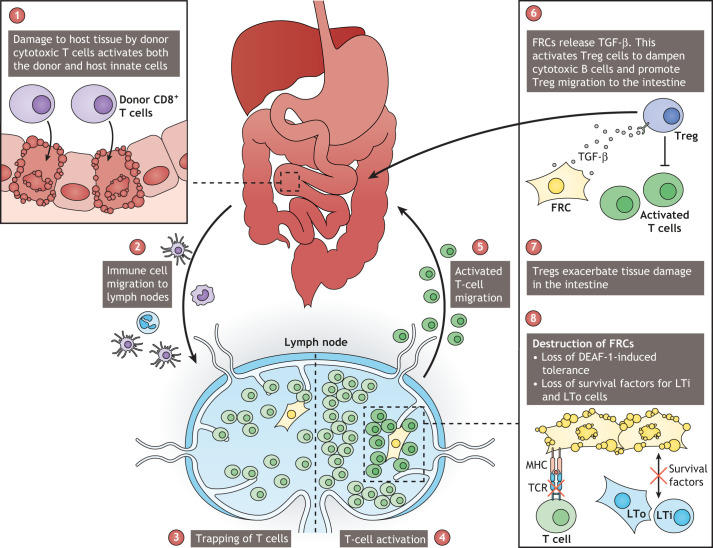Fig. 2.
Breakdown of homeostasis in organ tissue and lymph nodes drives graft versus host disease (GVHD). (1) Upon allogenic transplantation, donor cells, such as cytotoxic T cells, target host tissue in organs such as the intestine and initiate tissue damage. (2) Innate cells of the host, including neutrophils, monocyte-derived DCs, and donor CD11b+ and CD103+ DCs migrate to the lymph node. (3) DC recruitment increases the trapping of T cells in the lymph node. (4,5) T cells become activated against cognate host antigens and migrate to the intestine, where they drive damage and remodelling. (6) FRCs in the lymph node secrete TGF-β to activate Tregs and suppress the aberrant activation of T cells. (7) Tregs can migrate to the intestine, modulate the microenvironment, and further exacerbate tissue damage and remodelling. (8) Loss of peripheral tolerance is driven by the aberrant activation of T cells, which target the FRC network. LTi, lymphoid tissue inducer; LTo, lymphoid tissue organiser.

